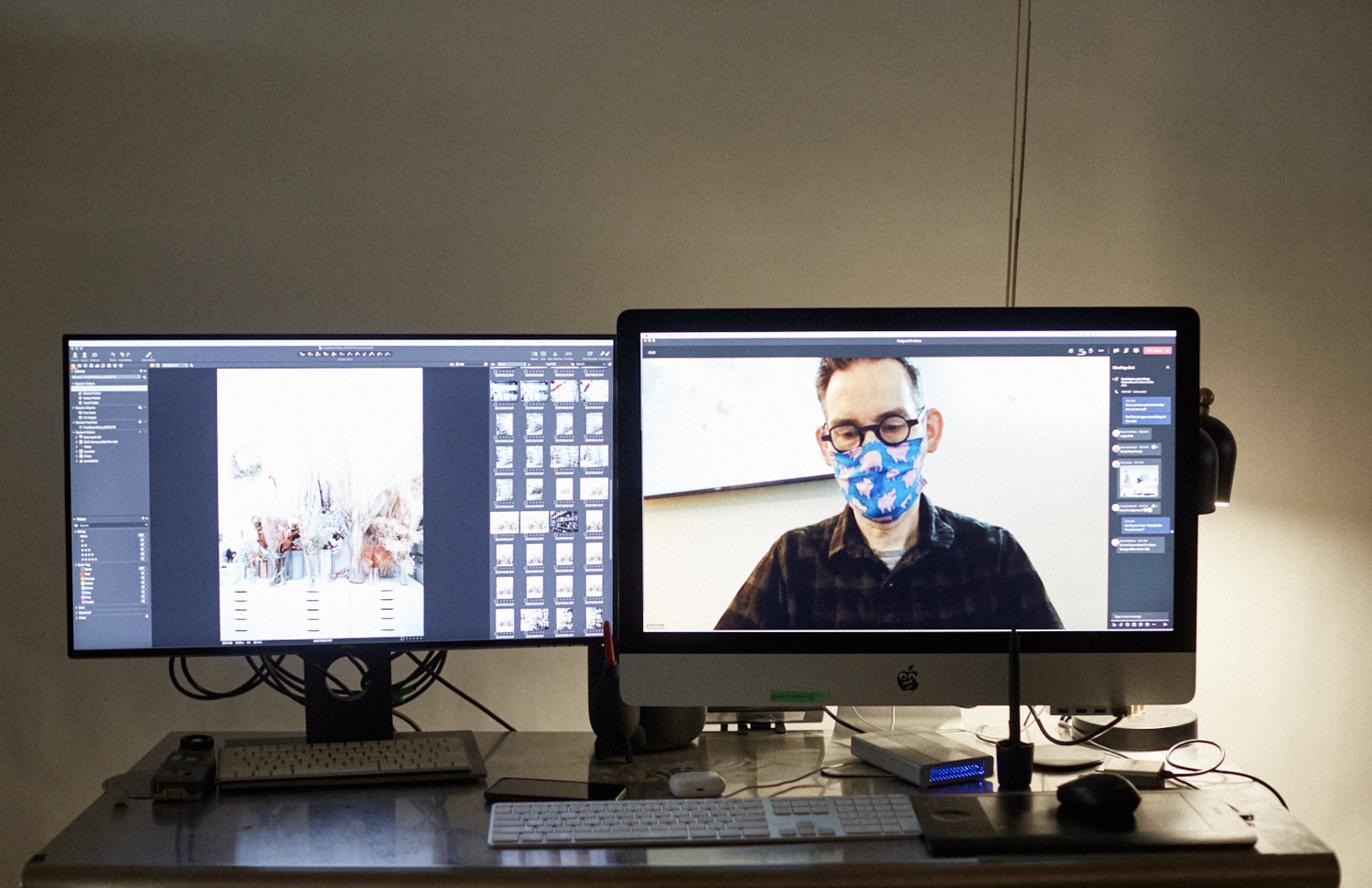If there’s a will – and proper video conferencing technology – there’s a way. Remote commercial photography and digital video production became a regular staple for businesses in need of quality visual assets during the COVID-19 pandemic. While the shift to remote work was born out of necessity, these types of photo and video projects are here to stay.
Ultimately, remote shoots aren’t that different from conducting these projects in person – there are just certain adjustments that you need to make. These offsite operations are also incredibly convenient whether you need to stay offsite for safety purposes or if you’re out of state.
Of course, there are a few key differences when working on a remote shoot. As a multimedia studio, we’ve learned quite a lot about how you can make your next remote photo or video project a smooth success.

4 Ways to Improve Your Remote Photo and Video Projects
Pre-planning is more important than ever before
The pre-production process has always been a vital part of a successful photo and video project. Your pre-production meetings lay the groundwork for everything that happens during a shoot. Pre-planning covers multiple critical topics that should be discussed before production day. These topics include, but are not limited to:
-
Shot purpose and style
-
Set design
-
Talent and wardrobe
-
Shot list
-
Production timelines
As you can see, these topics are extremely important to the success of your shoot. Covering all these details ahead of time will help ensure that your shoot runs as smoothly as possible. The problem is that it can be trickier to nail down all the pre-planning remotely.
Pre-planning requires a lot of close attention to small details to help you avoid issues and surprises on the day of production . It’s a bit easier to maintain this level of attention when everyone meets in person. For example, you may pay closer attention when looking at props right in front of you than seeing those same items on a glowing screen.
These critical exercises and planning sessions play a key role in your project, whether you meet in person or remotely. By catching little details or identifying certain solutions ahead of time, you’ll end up saving yourself a lot of time and money caused by future complications.
Work around availability ahead of time
Availability and responsiveness are key factors to a smooth shoot. However, life can get in the way of your ability to be there on shoot day, especially when you’re working remotely.
When you’re remote, there are multiple potential interruptions that can draw you away from a shoot – meetings, phone calls, your pets, etc. All these distractions are standard business, but they do pose some problems when approvals are needed on a project. Without someone available online for those approvals, you may end up needing more time to complete your project.
Fortunately, there’s and easy solution – communicate your and your team’s availability ahead of time. If the multimedia studio knows when you are and aren’t available, they can take measures to work around your schedule and be as efficient as possible on set. They can also work with you to identify the easiest way for you and your team to communicate with the in-studio team, whether that’s dropping images for approval in chat or even texting so that you can multitask on a call. Shoots can be flexible with enough notice, which is especially beneficial with remote work.
Constant communication
One of the biggest adjustments to remote shoots is that you only see what’s on camera. When you’re on set, you’re able to see everything that’s going on and monitor progress. That’s not possible when you’re in a different building.
The big problem with this situation is that you might be left in the dark while the on-set crew works on your project. If you request to have something adjusted, you can’t actually see the team making that adjustment. That scenario can lead to an awkward silence unless you’re given verbal communication throughout the process.
To remedy this situation, our team essentially narrates what’s happening on site for you and everyone else working remotely. If something is happening off camera, we can verbally acknowledge what’s going on and set expectations for you and your team. This is especially important for photo projects where there’s no live stream you can view. With consistent communication, you’ll still know exactly what’s going on at all times.
Find the right path to success
Sometimes the best path is the easiest one. When it comes down to it, there’s one basic truth for both in-person and remote shoots – find out what works for you. Flexibility is necessary in an environment where things can change at the last minute. By identifying what works for you and your multimedia studio, you’ll be able to streamline the process without sacrificing on the quality of your assets.
The need for flexibility can come in many forms. For example, we generally use Microsoft Teams to communicate with clients throughout projects, but we’re happy to work with Zoom or any other video conferencing technology if you’re more comfortable with it. If it comes down to it, text approvals can suffice in a pinch if it works for everyone involved.
Ultimately, our goal for each project is to deliver stunning assets that help you tell your story. In the process, we want to make that process as easy as possible. If that means trying out something new or modifying certain ideas, we’ll do what we can to make sure everything works.
Ready to work with a multimedia studio that can provide the best, most cost-effective way to bring your vision to life? Contact TRG today about our remote photography and video services.



